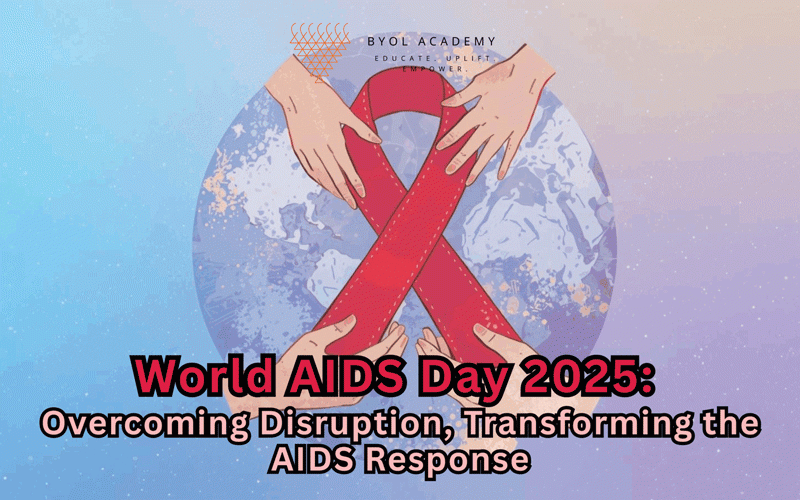
RECENTLY, the Zimjournos WhatsApp group had an engaging discussion about the impact of Artificial Intelligence (AI) on journalism in Zimbabwe. The issues raised were intriguing enough to inspire a deeper exploration of the topic in this column.
However, the space allocated here can only address a portion of the topic. During the conversation, a group member jokingly advised that I should avoid using AI in the writing of this article. I countered by pointing out that AI, much like the internet and smartphones before it, is poised to revolutionise our practices.
If technologies have the potential to improve our work, it is impractical to disregard them. Our duty is to employ them judiciously and efficiently. In the education sector, for instance, there are notable hurdles in dealing with and minimising the influence of AI on education.
For example, through a smartphone, a student can task AI to complete all assignments from math problems to class essays all in a few minutes. However, this issue is best left as a topic for another day.
As artificial intelligence reshapes the global media landscape, Zimbabwean journalism finds itself at a critical juncture. The country's media industry is cautiously embracing AI technologies, recognising both their potential and challenges.
Zimbabwe’s newsrooms
CITE, a digital-first media organisation in Bulawayo, has emerged as a pioneer in AI adoption. They've introduced an AI presenter named "Alice" for their daily news bulletins, significantly streamlining production processes. This innovation has been particularly well-received by younger audiences, suggesting a growing acceptance of AI in news delivery.
However, the integration of AI in Zimbabwean newsrooms is not without hurdles. Linguistic limitations pose a significant challenge, as current AI models struggle with correctly pronouncing local names. This underscores the need for AI systems tailored to Zimbabwe's linguistic diversity. This process may be referred to as training the system.
- Public relations: How artificial intelligence is changing the face of PR
- Queen Lozikeyi singer preaches peace
- Public relations: How artificial intelligence is changing the face of PR
- Business opinion: Branding through Artificial Intelligence
Keep Reading
Ethical concerns also loom large. As AI tools become more prevalent, there's a pressing need for formal training and clear guidelines to prevent misuse and maintain journalistic integrity. The lack of AI-specific training among journalists raises concerns about potential ethical breaches and the spread of misinformation. Such training could be arranged under separate cover.
Despite these challenges, AI presents opportunities for Zimbabwean journalism to innovate and compete globally. From enhancing investigative reporting to improving content distribution, AI tools can amplify the reach and impact of the Zimbabwean story.
As Zimbabwe's media landscape evolves, finding the right balance between AI adoption and preserving the human element of journalism will be crucial.
While AI can enhance efficiency, the unique perspectives and on-the-ground reporting of Zimbabwean journalists remain irreplaceable. AI tools have no emotions, and they wouldn’t even know if what they create makes sense. AI should be used to enhance the work of journalists, not to do their job for them.
First things first
To get started with an AI assistant, you have several options to choose from:
ChatGPT, developed by OpenAI, is widely regarded as the leading AI chatbot. It's available as a free web application and a mobile app for iOS and Android devices. The app offers features like voice conversations, image analysis, and data visualisation. A pro version is available for subscription.
Other popular AI assistants include:
- Google Gemini
- Anthropic's Claude
- Pi.ai (available on and for WhatsApp)
- Perplexity
- Copilot
- Chat & Ask AI
Many of these assistants are available as mobile apps or web applications. Most offer a free trial period followed by a subscription.
Most of them have been trained with information up to 2021 except for a few that include searches for the current period. I use a total of 12 AI Assistants and subscribe to Pro versions of half of them.
AI assistants use natural language processing NLP to understand and respond to voice and text commands. They can perform various tasks like answering questions, providing recommendations, and even creating content. As technology evolves, these assistants are becoming increasingly sophisticated, offering personalised experiences by adapting to users' preferences.
AI versus the old way
When AI abruptly interacts with traditional journalists operating in a conventional environment, several major changes are likely to unfold:
Skill adaptation: The journalist will need to rapidly up-skill to understand and utilise AI tools, potentially facing a steep learning curve.
Workflow disruption: Traditional reporting and writing processes will be altered as AI tools are integrated into newsrooms, requiring adjustments to established routines.
Role redefinition: The journalist's role may shift towards more analysis, interpretation, and in-depth reporting as AI takes over routine tasks like data processing and basic article generation. The AI Assistant can eliminate grammatical mediocrity in text by rewriting poor copy in seconds. As a result, the proficiency of skilled writers may be somewhat overshadowed by the narrowing of this gap.
Ethical considerations: The journalist will need to grapple with new ethical dilemmas, such as transparency in AI usage and maintaining journalistic integrity.
Generational divide: Older journalists might experience more resistance or difficulty adapting compared to younger colleagues who are often more receptive to AI technologies.
- Quality control challenges: The journalist will need to develop skills in fact-checking and verifying AI-generated content to maintain accuracy and credibility.
- Collaboration with AI: Learning to work alongside AI tools as assistants rather than viewing them as replacements will become crucial.
- Focus on human elements: There will likely be a greater emphasis on uniquely human skills like creativity, emotional intelligence, and investigative abilities.
Kenyan Journalism Embraces AI: Opportunities and Challenges
Kenyan newsrooms are cautiously integrating AI tools, sparking a mix of excitement and apprehension among journalists. Mercy Chelangat, a reporter at Nation newspaper, views AI as an enhancement rather than a threat to journalism. This sentiment reflects a growing recognition of AI's potential to revolutionise newsrooms across Africa.
AI's integration in Kenyan media offers significant advantages, particularly in data analysis and reporting accuracy. As newsrooms adopt these technologies, journalists are finding new ways to leverage AI for more efficient and precise reporting. However, the transition is not without challenges.
The Zimbabwean Experience
While specific data on Zimbabwean newsrooms is limited, the African context suggests similar opportunities and hurdles. Linguistic diversity and potential resistance from traditional editors may slow AI adoption. To thrive in this evolving landscape, journalists must cultivate an entrepreneurial mindset and embrace innovation.
The key to successful AI integration lies in striking a balance between technological efficiency and human expertise. As African newsrooms navigate this transition, they are poised to redefine journalism for the digital age, enhancing their capabilities while preserving the irreplaceable human touch in storytelling.
AI and the creative artist
I was reminded of the talent of artists like Tony Namate and Boyd Maliki. Curious to discover more cartoonists, I began searching for any additional names. To my surprise, I stumbled upon a long list of talented individuals in the field. Some of them include Nqobile Malinga, Shungu Nyandoro, Lovemore Mataire, Lenon Nsunda, Tapuwa Magodora, Emmanuel Ngwira, Barry Masendeke, Clive Chigubhu, Wellington Musonda, Tendayi Moyo, Wilfred Mhanda, and Carl Zapiro Meiring. Please note that this list may not be exhaustive.
After observing the extremely fine art details produced by the likes of Mid-journey, I had wondered about the future of media cartoons as we had known them. I was relieved to learn that the skill of the cartoonist is unlikely to disappear entirely with the advent of AI. While AI can assist in generating and manipulating images, cartoons often require creativity, wit, and a human touch that AI may struggle to replicate fully.
The unique artistic expression and storytelling abilities of a talented cartoonist are elements that can set their work apart and continue to be valued even in a world with advanced AI technology. AI may even be used as a tool to enhance the work of cartoonists, providing new ways to create and present cartoons rather than replacing the skill entirely.
- Bangure is a Filmmaker BA Honours 2.1. He has extensive experience in both print and electronic media production and management. He is a past chairman of the National Employment Council (N.E.C.) of the Printing, Packaging and Newspaper Industry. Bangure has considerable exposure to IT networks and Cloud technologies and is an enthusiastic scholar of artificial intelligence. Email: naison.bangure@hub-edutech.com










